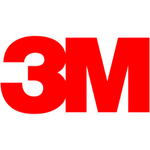Automotive Adaptive Suspension System Market Synopsis
Automotive Adaptive Suspension System Market Size is Valued at USD 47.68 Billion in 2024, and is Projected to Reach USD 58.55 Billion by 2032, Growing at a CAGR of 2.60% From 2024 to 2032.
The Automotive Adaptive Suspension System Market deals with the design and application of improved suspension systems that are incorporated in motor vehicles to improve their stability and comfort by providing optimal suspension adjustments pertinent to the present driving conditions or car Maneuvers. This market comprises several system kinds, which encompass the semi-active suspension systems and the active suspension systems, and varieties of vehicle classes, be it the passenger car segment or the commercial vehicle segment. These systems use the technological solutions that vary from electromagnetic and hydraulic to such advanced as magneto-rheological dampers. The market is based on OEMs as well as aftermarket and the key components familiar in automotive SNS comprise of Sensors, ECUs, actuators etc. Regionally, the market is characterized by North America, Europe, Asia-Pacific, Latin America, and the Middle East & Africa regions.
- The core reason that is the automotive adaptive suspension system market is growing is to have better vehicle comfort and protection. Current buyers are demanding better riding cars, more so due to the complexity that involves real time adaptive control systems for suspension. Electronic suspensions enhance the vehicle’s control, balance, and comfort therefore one of the features that car manufacturers do not hesitate to include in their cars. The growing interest in the self-driving and connected cars has additionally emphasized the importance of these systems since they support the proper functioning of ADAS.
- The other factor is the development and evolution in the IT part of automotive components. Advances in Material science, sensor technology and electronics control unit have increased reliability, efficiency and affordability of the adaptive suspension systems. The increase of electric cars and hybrids also leads to the widespread of the adaptive suspension systems for better battery and dynamic performance. Also, government policies such as Vorus emission and safety standards are compelling manufactures to incorporate adaptive suspension systems in their cars to enhance safety and emissions, thus fuelling the market.

Automotive Adaptive Suspension System Market Trend Analysis
From Luxury to Mainstream, The Market Expansion of Adaptive Suspension Systems
- Thus, the Advances in automotive technology and growth in Automobile consumer demand for better comfort and safety are driving the Automotive Adaptive Suspension System Market at present. The up surge in the number of electric and fully automated vehicles is putting pressure on suspension needs to have dynamic control and ability to respond to different road and driving conditions. Advanced material and technology like; sensing and electronic control units working with suspensions systems are now possible to achieve better dynamic controlling in vehicles and enhancement in comfort while reduction in body roll in turnings. Also, increase in the concern related to vehicle performance and increase in demand for luxury cars is further boosting the growth of the market as adaptive suspension systems are increasingly being offered as standard in luxury cars.
- Regionally the market is growing at a healthy pace in Asia Pacific, this is due to increase in automotive industry in countries such as China, Japan and India. Adaptive suspension systems are on the increase in the region due to the focus of the region’s automotive industry and the growing research and development expenditure by key automotive companies. North America and Europe also serve as strong markets due to the increasing customer need for sophisticated automotive technologies and the MHPS industry’s key participants. Market growth is being driven even further by the inclination towards electric and also self-ruling automobiles in these areas. Furthermore, several governments are enforcing legislation that seeks to increase vehicle safety and decrease emissions, in the process, prodding the manufacturers to fit adaptive suspension system since they assist in the optimization of aerodynamics and consequently improving the efficiency of fuel usage and the emission of gases into the atmosphere.
Driving Growth, Opportunities in the Automotive Adaptive Suspension System Market
- The automotive adaptive suspension system market is expected to grow rapidly as the result of the latest trends, specifically, the continual search for improved driving comfort, as well as safety and handling in manufactured vehicles of different categories. New developments in car engineering, especially in damping technologies like electromagnetic and hydraulic/pneumatic systems are helpful to the market growth. Further, the increasing usage of semi-active and active suspension systems in luxury and premium passenger cars is also contributing to the substance of this market. These systems allow real-time modifications of road conditions and contribute to achieving of better stability, and diminished oscillations in the vehicle cabin, which are essential for both driver’s comfort and passengers’ comfort.
- Moreover, rising aftermarket sector to drive the automotive adaptive suspension systems market growth in the future. It expands within the aftermarket segment, which, as per the current trend of vehicle customization and upgrading, entails consumers upgrading their vehicles with superior suspension systems. Also, increased regulatory measures concerning vehicle safety and emission controls are pressurizing auto makers to install superior suspension systems through models, thereby creating business opportunities. On the basis of growth indicators and increasing research and development activities, initiated by key players to come up with a more efficient and cheaper version of the system, the automotive adaptive suspension system market is expected to show stable growth in the forecast period.
Automotive Adaptive Suspension System Market Segment Analysis:
Automotive Adaptive Suspension System Market is Segmented on the basis of System Type, Vehicle Type and technology.
By System Type, Semi-Active Suspension System segment is expected to dominate the market during the forecast period
- The automotive adaptive suspension system market offers two primary types of systems: two major types- the semi-active suspension system and the active suspension system. Active suspension systems only modify the damping rate either via hydraulic or electric control based on the road inputs to increase ride comfort instead of packed with the complexities and expensive fully active ones.
- On the other hand active suspension systems are control systems that work to reduce the variations in the damper force constantly thereby providing the best comfort and stability. Pertaining to these systems, there are different types of vehicles that it can address, and these systems are vital to improving the general driving experience of automobiles making it one of the primary areas of concentration regarding technology advancement and market in the automobile industry.
By Technology, Electro-Hydraulic System segment held the largest share in 2023
- The automotive adaptive suspension system market includes multiple innovative technologies such as Magneto-Rheological (MR) damper system that changes the damping capability with magnetic fields to control the vehicle’s movement accurately. Electro-hydraulic suspension combines hydraulic fluid and electronics to provide programs with velocity sensitivity in adjusting the suspension of cars.
- Electro-mechanical, on the other hand, utilize electrical motors for quick and effective adjustment of the suspension leading to better comfort as well as the feel of the vehicle. Moreover, the market also encompasses other advanced technologies that are being developed to enhance suspension characteristics and kinetics; therefore, the type of automotive suspension is still progressing in innovation and differentiation.
Automotive Adaptive Suspension System Market Regional Insights:
Asia Pacific is Expected to Dominate the Market Over the Forecast period
- The Asia-Pacific automotive adaptive suspension system market is still considered promising due to the growing automotive production, the desire of consumers for comfort and additional options, and the development of suspension systems. alignment China, Japan, and South Korea are the leading countries because of established automobile production industries and technology advancement. Chinese companies take a big pie of the market due to the size of automotive market in China, and the government of China the focus on EVs and connected car technologies.
- A major source to this market is Japan that already specializes in automotive engineering and offers cars that are both high-performing and safety-oriented. South Korea also has an automotive industry and demand and export for automobiles are on the rise. The technological expansion to the electromagnetic and electro hydraulic suspensions is quickly taking root in the region as car makers experiment and seek to improve the handling and damps of cars in the region. Furthermore, rising consumer’s disposable income along with their inclination towards the purchase of the premium segment automobile would significantly contribute positively to the market’s growth in the Asia-Pacific region, which is expected to be the key area of focus for future advancements in automotive suspension systems.
Active Key Players in the Automotive Adaptive Suspension System Market
- Continental AG (Germany)
- BWI Group (China)
- ZF Friedrichshafen AG (Germany)
- Tenneco Inc. (United States)
- Magneti Marelli S.p.A. (now Calsonic Kansei Corporation) (Italy)
- thyssenkrupp AG (Germany)
- BWI Group (China)
- Mando Corporation (South Korea)
- Quanxing Machining Group Co., Ltd. (China)
- WABCO (acquired by ZF Friedrichshafen AG) (Germany), and Others Key Players.
|
Global Automotive Adaptive Suspension System Market |
|||
|
Base Year: |
2023 |
Forecast Period: |
2024-2032 |
|
Historical Data: |
2017 to 2023 |
Market Size in 2023: |
USD 47.68 Bn. |
|
Forecast Period 2024-32 CAGR: |
2.60 % |
Market Size in 2032: |
USD 58.55 Bn. |
|
Segments Covered: |
By System Type |
|
|
|
By Vehicle Type |
|
||
|
By Technology |
|
||
|
By Region |
|
||
|
Key Market Drivers: |
|
||
|
Key Market Restraints: |
|
||
|
Key Opportunities: |
|
||
|
Companies Covered in the report: |
|
||
- INTRODUCTION
- RESEARCH OBJECTIVES
- RESEARCH METHODOLOGY
- RESEARCH PROCESS
- SCOPE AND COVERAGE
- Market Definition
- Key Questions Answered
- MARKET SEGMENTATION
- EXECUTIVE SUMMARY
- MARKET OVERVIEW
- GROWTH OPPORTUNITIES BY SEGMENT
- MARKET LANDSCAPE
- PORTER’S FIVE FORCES ANALYSIS
- Bargaining Power of Supplier
- Threat Of New Entrants
- Threat Of Substitutes
- Competitive Rivalry
- Bargaining Power Among Buyers
- INDUSTRY VALUE CHAIN ANALYSIS
- MARKET DYNAMICS
- Drivers
- Restraints
- Opportunities
- Challenges
- MARKET TREND ANALYSIS
- REGULATORY LANDSCAPE
- PESTLE ANALYSIS
- PRICE TREND ANALYSIS
- PATENT ANALYSIS
- TECHNOLOGY EVALUATION
- MARKET IMPACT OF THE RUSSIA-UKRAINE WAR
- Geopolitical Market Disruptions
- Supply Chain Disruptions
- Instability in Emerging Markets
- ECOSYSTEM
- PORTER’S FIVE FORCES ANALYSIS
- AUTOMOTIVE ADAPTIVE SUSPENSION SYSTEM MARKET BY SYSTEM TYPE (2017-2032)
- AUTOMOTIVE ADAPTIVE SUSPENSION SYSTEM MARKET SNAPSHOT AND GROWTH ENGINE
- MARKET OVERVIEW
- SEMI-ACTIVE SUSPENSION SYSTEM
- Introduction And Market Overview
- Historic And Forecasted Market Size in Value (2017-2032F)
- Historic And Forecasted Market Size in Volume (2017-2032F)
- Key Market Trends, Growth Factors and Opportunities
- Geographic Segmentation Analysis
- ACTIVE SUSPENSION SYSTEM
- AUTOMOTIVE ADAPTIVE SUSPENSION SYSTEM MARKET BY VEHICLE TYPE (2017-2032)
- AUTOMOTIVE ADAPTIVE SUSPENSION SYSTEM MARKET SNAPSHOT AND GROWTH ENGINE
- MARKET OVERVIEW
- PASSENGER CARS
- Introduction And Market Overview
- Historic And Forecasted Market Size in Value (2017-2032F)
- Historic And Forecasted Market Size in Volume (2017-2032F)
- Key Market Trends, Growth Factors And Opportunities
- Geographic Segmentation Analysis
- LIGHT COMMERCIAL VEHICLES (LCVS)
- HEAVY COMMERCIAL VEHICLES (HCVS)
- AUTOMOTIVE ADAPTIVE SUSPENSION SYSTEM MARKET BY TECHNOLOGY (2017-2032)
- AUTOMOTIVE ADAPTIVE SUSPENSION SYSTEM MARKET SNAPSHOT AND GROWTH ENGINE
- MARKET OVERVIEW
- MAGNETO-RHEOLOGICAL (MR) DAMPER SYSTEM
- Introduction And Market Overview
- Historic And Forecasted Market Size in Value (2017-2032F)
- Historic And Forecasted Market Size in Volume (2017-2032F)
- Key Market Trends, Growth Factors And Opportunities
- Geographic Segmentation Analysis
- HYDRAULIC SYSTEM
- ELECTRO-MECHANICAL SYSTEM,
- OTHER TECHNOLOGIES
- COMPANY PROFILES AND COMPETITIVE ANALYSIS
- COMPETITIVE LANDSCAPE
- Competitive Benchmarking
- Automotive Adaptive Suspension System Market Share By Manufacturer (2023)
- Industry BCG Matrix
- Heat Map Analysis
- Mergers & Acquisitions
- CONTINENTAL AG (GERMANY)
- Company Overview
- Key Executives
- Company Snapshot
- Role of the Company in the Market
- Sustainability and Social Responsibility
- Operating Business Segments
- Product Portfolio
- Business Performance (Production Volume, Sales Volume, Sales Margin, Production Capacity, Capacity Utilization Rate)
- Key Strategic Moves And Recent Developments
- SWOT Analysis
- BWI GROUP (CHINA)
- ZF FRIEDRICHSHAFEN AG (GERMANY)
- TENNECO INC. (UNITED STATES)
- MAGNETI MARELLI S.P.A. (NOW CALSONIC KANSEI CORPORATION) (ITALY)
- THYSSENKRUPP AG (GERMANY)
- BWI GROUP (CHINA)
- MANDO CORPORATION (SOUTH KOREA)
- QUANXING MACHINING GROUP CO., LTD. (CHINA)
- WABCO (ACQUIRED BY ZF FRIEDRICHSHAFEN AG) (GERMANY)
- COMPETITIVE LANDSCAPE
- GLOBAL AUTOMOTIVE ADAPTIVE SUSPENSION SYSTEM MARKET BY REGION
- OVERVIEW
- NORTH AMERICA
- Key Market Trends, Growth Factors And Opportunities
- Key Manufacturers
- Historic And Forecasted Market Size By System Type
- Historic And Forecasted Market Size By Vehicle Type
- Historic And Forecasted Market Size By Technology
- Historic And Forecasted Market Size By Country
- USA
- Canada
- Mexico
- EASTERN EUROPE
- Key Market Trends, Growth Factors And Opportunities
- Key Manufacturers
- Historic And Forecasted Market Size By Segments
- Historic And Forecasted Market Size By Country
- Russia
- Bulgaria
- The Czech Republic
- Hungary
- Poland
- Romania
- Rest Of Eastern Europe
- WESTERN EUROPE
- Key Market Trends, Growth Factors And Opportunities
- Key Manufacturers
- Historic And Forecasted Market Size By Segments
- Historic And Forecasted Market Size By Country
- Germany
- United Kingdom
- France
- The Netherlands
- Italy
- Spain
- Rest Of Western Europe
- ASIA PACIFIC
- Key Market Trends, Growth Factors And Opportunities
- Key Manufacturers
- Historic And Forecasted Market Size By Segments
- Historic And Forecasted Market Size By Country
- China
- India
- Japan
- South Korea
- Malaysia
- Thailand
- Vietnam
- The Philippines
- Australia
- New-Zealand
- Rest Of APAC
- MIDDLE EAST & AFRICA
- Key Market Trends, Growth Factors And Opportunities
- Key Manufacturers
- Historic And Forecasted Market Size By Segments
- Historic And Forecasted Market Size By Country
- Turkey
- Bahrain
- Kuwait
- Saudi Arabia
- Qatar
- UAE
- Israel
- South Africa
- SOUTH AMERICA
- Key Market Trends, Growth Factors And Opportunities
- Key Manufacturers
- Historic And Forecasted Market Size By Segments
- Historic And Forecasted Market Size By Country
- Brazil
- Argentina
- Rest of South America
- INVESTMENT ANALYSIS
- ANALYST VIEWPOINT AND CONCLUSION
- Recommendations and Concluding Analysis
- Potential Market Strategies
-
- Thailand
- Vietnam
- The Philippines
- Australia
- New-Zealand
- Rest Of APAC
-
- MIDDLE EAST & AFRICA
- Key Market Trends, Growth Factors And Opportunities
- Key Manufacturers
- Historic And Forecasted Market Size By Segments
- Historic And Forecasted Market Size By Country
- Turkey
- Bahrain
- Kuwait
- Saudi Arabia
- Qatar
- UAE
- Israel
- South Africa
- SOUTH AMERICA
- Key Market Trends, Growth Factors And Opportunities
- Key Manufacturers
- Historic And Forecasted Market Size By Segments
- Historic And Forecasted Market Size By Country
- Brazil
- Argentina
- Rest of South America
- INVESTMENT ANALYSIS
- ANALYST VIEWPOINT AND CONCLUSION
- Recommendations and Concluding Analysis
- Potential Market Strategies
|
Global Automotive Adaptive Suspension System Market |
|||
|
Base Year: |
2023 |
Forecast Period: |
2024-2032 |
|
Historical Data: |
2017 to 2023 |
Market Size in 2023: |
USD 47.68 Bn. |
|
Forecast Period 2024-32 CAGR: |
2.60 % |
Market Size in 2032: |
USD 58.55 Bn. |
|
Segments Covered: |
By System Type |
|
|
|
By Vehicle Type |
|
||
|
By Technology |
|
||
|
By Region |
|
||
|
Key Market Drivers: |
|
||
|
Key Market Restraints: |
|
||
|
Key Opportunities: |
|
||
|
Companies Covered in the report: |
|
||
LIST OF TABLES
TABLE 001. EXECUTIVE SUMMARY
TABLE 002. AUTOMOTIVE ADAPTIVE SUSPENSION SYSTEM MARKET BARGAINING POWER OF SUPPLIERS
TABLE 003. AUTOMOTIVE ADAPTIVE SUSPENSION SYSTEM MARKET BARGAINING POWER OF CUSTOMERS
TABLE 004. AUTOMOTIVE ADAPTIVE SUSPENSION SYSTEM MARKET COMPETITIVE RIVALRY
TABLE 005. AUTOMOTIVE ADAPTIVE SUSPENSION SYSTEM MARKET THREAT OF NEW ENTRANTS
TABLE 006. AUTOMOTIVE ADAPTIVE SUSPENSION SYSTEM MARKET THREAT OF SUBSTITUTES
TABLE 007. AUTOMOTIVE ADAPTIVE SUSPENSION SYSTEM MARKET BY TECHNOLOGY
TABLE 008. ACTIVE SUSPENSION SYSTEMS MARKET OVERVIEW (2016-2028)
TABLE 009. SEMI-ACTIVE SUSPENSION SYSTEMS MARKET OVERVIEW (2016-2028)
TABLE 010. AUTOMOTIVE ADAPTIVE SUSPENSION SYSTEM MARKET BY ACTUATION TYPE
TABLE 011. HYDRAULIC SYSTEMS MARKET OVERVIEW (2016-2028)
TABLE 012. ELECTROMAGNETIC SYSTEMS MARKET OVERVIEW (2016-2028)
TABLE 013. SOLENOID VALVE SYSTEMS MARKET OVERVIEW (2016-2028)
TABLE 014. OTHERS MARKET OVERVIEW (2016-2028)
TABLE 015. AUTOMOTIVE ADAPTIVE SUSPENSION SYSTEM MARKET BY VEHICLE TYPE
TABLE 016. PASSENGER VEHICLES MARKET OVERVIEW (2016-2028)
TABLE 017. COMMERCIAL VEHICLES MARKET OVERVIEW (2016-2028)
TABLE 018. NORTH AMERICA AUTOMOTIVE ADAPTIVE SUSPENSION SYSTEM MARKET, BY TECHNOLOGY (2016-2028)
TABLE 019. NORTH AMERICA AUTOMOTIVE ADAPTIVE SUSPENSION SYSTEM MARKET, BY ACTUATION TYPE (2016-2028)
TABLE 020. NORTH AMERICA AUTOMOTIVE ADAPTIVE SUSPENSION SYSTEM MARKET, BY VEHICLE TYPE (2016-2028)
TABLE 021. N AUTOMOTIVE ADAPTIVE SUSPENSION SYSTEM MARKET, BY COUNTRY (2016-2028)
TABLE 022. EUROPE AUTOMOTIVE ADAPTIVE SUSPENSION SYSTEM MARKET, BY TECHNOLOGY (2016-2028)
TABLE 023. EUROPE AUTOMOTIVE ADAPTIVE SUSPENSION SYSTEM MARKET, BY ACTUATION TYPE (2016-2028)
TABLE 024. EUROPE AUTOMOTIVE ADAPTIVE SUSPENSION SYSTEM MARKET, BY VEHICLE TYPE (2016-2028)
TABLE 025. AUTOMOTIVE ADAPTIVE SUSPENSION SYSTEM MARKET, BY COUNTRY (2016-2028)
TABLE 026. ASIA PACIFIC AUTOMOTIVE ADAPTIVE SUSPENSION SYSTEM MARKET, BY TECHNOLOGY (2016-2028)
TABLE 027. ASIA PACIFIC AUTOMOTIVE ADAPTIVE SUSPENSION SYSTEM MARKET, BY ACTUATION TYPE (2016-2028)
TABLE 028. ASIA PACIFIC AUTOMOTIVE ADAPTIVE SUSPENSION SYSTEM MARKET, BY VEHICLE TYPE (2016-2028)
TABLE 029. AUTOMOTIVE ADAPTIVE SUSPENSION SYSTEM MARKET, BY COUNTRY (2016-2028)
TABLE 030. MIDDLE EAST & AFRICA AUTOMOTIVE ADAPTIVE SUSPENSION SYSTEM MARKET, BY TECHNOLOGY (2016-2028)
TABLE 031. MIDDLE EAST & AFRICA AUTOMOTIVE ADAPTIVE SUSPENSION SYSTEM MARKET, BY ACTUATION TYPE (2016-2028)
TABLE 032. MIDDLE EAST & AFRICA AUTOMOTIVE ADAPTIVE SUSPENSION SYSTEM MARKET, BY VEHICLE TYPE (2016-2028)
TABLE 033. AUTOMOTIVE ADAPTIVE SUSPENSION SYSTEM MARKET, BY COUNTRY (2016-2028)
TABLE 034. SOUTH AMERICA AUTOMOTIVE ADAPTIVE SUSPENSION SYSTEM MARKET, BY TECHNOLOGY (2016-2028)
TABLE 035. SOUTH AMERICA AUTOMOTIVE ADAPTIVE SUSPENSION SYSTEM MARKET, BY ACTUATION TYPE (2016-2028)
TABLE 036. SOUTH AMERICA AUTOMOTIVE ADAPTIVE SUSPENSION SYSTEM MARKET, BY VEHICLE TYPE (2016-2028)
TABLE 037. AUTOMOTIVE ADAPTIVE SUSPENSION SYSTEM MARKET, BY COUNTRY (2016-2028)
TABLE 038. CONTINENTAL AG: SNAPSHOT
TABLE 039. CONTINENTAL AG: BUSINESS PERFORMANCE
TABLE 040. CONTINENTAL AG: PRODUCT PORTFOLIO
TABLE 041. CONTINENTAL AG: KEY STRATEGIC MOVES AND DEVELOPMENTS
TABLE 041. FOX FACTORY INC.: SNAPSHOT
TABLE 042. FOX FACTORY INC.: BUSINESS PERFORMANCE
TABLE 043. FOX FACTORY INC.: PRODUCT PORTFOLIO
TABLE 044. FOX FACTORY INC.: KEY STRATEGIC MOVES AND DEVELOPMENTS
TABLE 044. GABRIEL INDIA LIMITED: SNAPSHOT
TABLE 045. GABRIEL INDIA LIMITED: BUSINESS PERFORMANCE
TABLE 046. GABRIEL INDIA LIMITED: PRODUCT PORTFOLIO
TABLE 047. GABRIEL INDIA LIMITED: KEY STRATEGIC MOVES AND DEVELOPMENTS
TABLE 047. HENDRICKSON USA L.L.C.: SNAPSHOT
TABLE 048. HENDRICKSON USA L.L.C.: BUSINESS PERFORMANCE
TABLE 049. HENDRICKSON USA L.L.C.: PRODUCT PORTFOLIO
TABLE 050. HENDRICKSON USA L.L.C.: KEY STRATEGIC MOVES AND DEVELOPMENTS
TABLE 050. KYB CORPORATION: SNAPSHOT
TABLE 051. KYB CORPORATION: BUSINESS PERFORMANCE
TABLE 052. KYB CORPORATION: PRODUCT PORTFOLIO
TABLE 053. KYB CORPORATION: KEY STRATEGIC MOVES AND DEVELOPMENTS
TABLE 053. MANDO CORPORATION: SNAPSHOT
TABLE 054. MANDO CORPORATION: BUSINESS PERFORMANCE
TABLE 055. MANDO CORPORATION: PRODUCT PORTFOLIO
TABLE 056. MANDO CORPORATION: KEY STRATEGIC MOVES AND DEVELOPMENTS
TABLE 056. SOGEFI SPA: SNAPSHOT
TABLE 057. SOGEFI SPA: BUSINESS PERFORMANCE
TABLE 058. SOGEFI SPA: PRODUCT PORTFOLIO
TABLE 059. SOGEFI SPA: KEY STRATEGIC MOVES AND DEVELOPMENTS
TABLE 059. TENNECO INC: SNAPSHOT
TABLE 060. TENNECO INC: BUSINESS PERFORMANCE
TABLE 061. TENNECO INC: PRODUCT PORTFOLIO
TABLE 062. TENNECO INC: KEY STRATEGIC MOVES AND DEVELOPMENTS
TABLE 062. WABCO: SNAPSHOT
TABLE 063. WABCO: BUSINESS PERFORMANCE
TABLE 064. WABCO: PRODUCT PORTFOLIO
TABLE 065. WABCO: KEY STRATEGIC MOVES AND DEVELOPMENTS
TABLE 065. ZF TRW (SUBSIDIARY OF ZF FRIEDRICHSHAFEN AG): SNAPSHOT
TABLE 066. ZF TRW (SUBSIDIARY OF ZF FRIEDRICHSHAFEN AG): BUSINESS PERFORMANCE
TABLE 067. ZF TRW (SUBSIDIARY OF ZF FRIEDRICHSHAFEN AG): PRODUCT PORTFOLIO
TABLE 068. ZF TRW (SUBSIDIARY OF ZF FRIEDRICHSHAFEN AG): KEY STRATEGIC MOVES AND DEVELOPMENTS
LIST OF FIGURES
FIGURE 001. YEARS CONSIDERED FOR ANALYSIS
FIGURE 002. SCOPE OF THE STUDY
FIGURE 003. AUTOMOTIVE ADAPTIVE SUSPENSION SYSTEM MARKET OVERVIEW BY REGIONS
FIGURE 004. PORTER'S FIVE FORCES ANALYSIS
FIGURE 005. BARGAINING POWER OF SUPPLIERS
FIGURE 006. COMPETITIVE RIVALRYFIGURE 007. THREAT OF NEW ENTRANTS
FIGURE 008. THREAT OF SUBSTITUTES
FIGURE 009. VALUE CHAIN ANALYSIS
FIGURE 010. PESTLE ANALYSIS
FIGURE 011. AUTOMOTIVE ADAPTIVE SUSPENSION SYSTEM MARKET OVERVIEW BY TECHNOLOGY
FIGURE 012. ACTIVE SUSPENSION SYSTEMS MARKET OVERVIEW (2016-2028)
FIGURE 013. SEMI-ACTIVE SUSPENSION SYSTEMS MARKET OVERVIEW (2016-2028)
FIGURE 014. AUTOMOTIVE ADAPTIVE SUSPENSION SYSTEM MARKET OVERVIEW BY ACTUATION TYPE
FIGURE 015. HYDRAULIC SYSTEMS MARKET OVERVIEW (2016-2028)
FIGURE 016. ELECTROMAGNETIC SYSTEMS MARKET OVERVIEW (2016-2028)
FIGURE 017. SOLENOID VALVE SYSTEMS MARKET OVERVIEW (2016-2028)
FIGURE 018. OTHERS MARKET OVERVIEW (2016-2028)
FIGURE 019. AUTOMOTIVE ADAPTIVE SUSPENSION SYSTEM MARKET OVERVIEW BY VEHICLE TYPE
FIGURE 020. PASSENGER VEHICLES MARKET OVERVIEW (2016-2028)
FIGURE 021. COMMERCIAL VEHICLES MARKET OVERVIEW (2016-2028)
FIGURE 022. NORTH AMERICA AUTOMOTIVE ADAPTIVE SUSPENSION SYSTEM MARKET OVERVIEW BY COUNTRY (2016-2028)
FIGURE 023. EUROPE AUTOMOTIVE ADAPTIVE SUSPENSION SYSTEM MARKET OVERVIEW BY COUNTRY (2016-2028)
FIGURE 024. ASIA PACIFIC AUTOMOTIVE ADAPTIVE SUSPENSION SYSTEM MARKET OVERVIEW BY COUNTRY (2016-2028)
FIGURE 025. MIDDLE EAST & AFRICA AUTOMOTIVE ADAPTIVE SUSPENSION SYSTEM MARKET OVERVIEW BY COUNTRY (2016-2028)
FIGURE 026. SOUTH AMERICA AUTOMOTIVE ADAPTIVE SUSPENSION SYSTEM MARKET OVERVIEW BY COUNTRY (2016-2028)
Frequently Asked Questions :
The forecast period in the Automotive Adaptive Suspension System Market research report is 2024-2032.
Continental AG (Germany), BWI Group (China), ZF Friedrichshafen AG (Germany), Tenneco Inc. (United States), Magneti Marelli S.p.A. (now Calsonic Kansei Corporation) (Italy), thyssenkrupp AG (Germany), BWI Group (China), Mando Corporation (South Korea), Quanxing Machining Group Co., Ltd. (China), WABCO (acquired by ZF Friedrichshafen AG) (Germany), and Other Major Players.
The Automotive Adaptive Suspension System Market is segmented into by System Type (Semi-Active Suspension System, Active Suspension System), by Vehicle Type (Passenger Cars, Light Commercial Vehicles (LCVs), Heavy Commercial Vehicles (HCVs)), By Technology (Magneto-Rheological (MR) Damper System, Hydraulic System, Electro-Mechanical System, Other Technologies). By region, it is analyzed across North America (U.S.; Canada; Mexico), Eastern Europe (Bulgaria; The Czech Republic; Hungary; Poland; Romania; Rest of Eastern Europe), Western Europe (Germany; UK; France; Netherlands; Italy; Russia; Spain; Rest of Western Europe), Asia-Pacific (China; India; Japan; Southeast Asia, etc.), South America (Brazil; Argentina, etc.), Middle East & Africa (Saudi Arabia; South Africa, etc.).
The Automotive Adaptive Suspension System Market deals with the design and application of improved suspension systems that are incorporated in motor vehicles to improve their stability and comfort by providing optimal suspension adjustments pertinent to the present driving conditions or car Maneuvers. This market comprises several system kinds, which encompass the semi-active suspension systems and the active suspension systems, and varieties of vehicle classes, be it the passenger car segment or the commercial vehicle segment. These systems use technological solutions that vary from electromagnetic and hydraulic to such advanced as magneto-rheological dampers. The market is based on OEMs as well as aftermarket and the key components familiar in automotive SNS comprise of Sensors, ECUs, actuators etc. Regionally, the market is characterized by North America, Europe, Asia-Pacific, Latin America, and the Middle East & Africa regions.
Automotive Adaptive Suspension System Market Size is Valued at USD 47.68 Billion in 2024, and is Projected to Reach USD 58.55 Billion by 2032, Growing at a CAGR of 2.60% From 2024-2032.


































